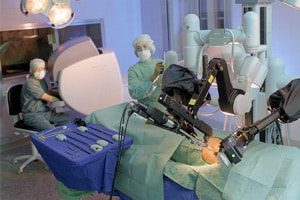
A Portland, Oregon woman suffered months of intense pain after a hysterectomy performed last September with the aid of the da Vinci surgical robot system. Heidi Carlson knew something was wrong, but she couldn’t convince doctors, she said in an interview with KATU TV. She wants others to know what she went through so they […]
 A Portland, Oregon woman suffered months of intense pain after a hysterectomy performed last September with the aid of the da Vinci surgical robot system.
A Portland, Oregon woman suffered months of intense pain after a hysterectomy performed last September with the aid of the da Vinci surgical robot system.
Heidi Carlson knew something was wrong, but she couldn’t convince doctors, she said in an interview with KATU TV. She wants others to know what she went through so they won’t have to.
Carlson told KATU that she did everything doctors suggested to relieve the pain, including physical therapy, acupuncture, and injections of pain medication. None of these helped. A CT scan finally revealed the answer: a small metal piece from one of the robot’s instruments had broken off inside her body during her surgery. “If they would have just taken an X-ray right after the surgery, or really examined all of the instruments, it could have been prevented,” she said.
Intuitive Surgical, the manufacturer of the da Vinci system, has been under scrutiny over increasing reports of patient injuries and deaths associated with robot-assisted surgeries. A 2011 study found that hospital websites often exaggerate the benefits of robotic surgery, while underestimating the risks, according to Bloomberg News. The company’s marketing and training practices have also been under review.
Surgeons have been debating whether the benefits of robotic surgery justify the increased costs. The robots, currently in use in over 1,300 hospitals nationwide, cost $1.5 to $2 million each, creating considerable pressure for a hospital to use the robot for as many procedures as possible. According to a report published in the Journal of the American Medical Association in February, hysterectomies performed robotically cost hospitals $2,189 more than surgery performed without the robot, without reducing complications.
Carlson told KATU TV she would have considered other surgical options but doctors didn’t bring those up.


